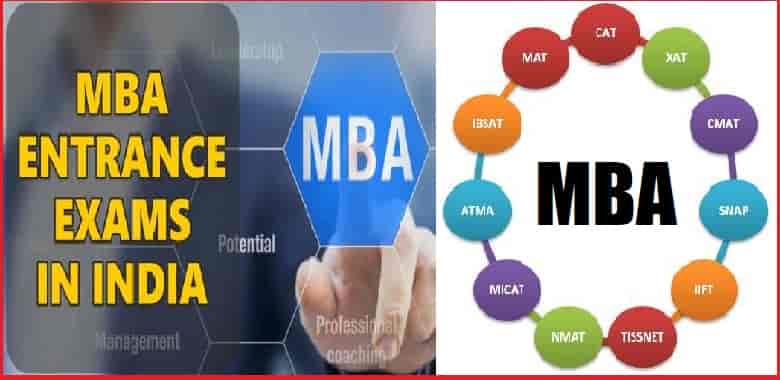Pursuing a Master of Business Administration (MBA) is a transformative journey that opens doors to numerous career opportunities and personal growth. The first step towards achieving this milestone is securing admission to a renowned business school. While the Common Admission Test (CAT) is the most widely recognized entrance exam in India for MBA programs, there are several other exams that aspiring MBA candidates can explore. In this article, we will delve into alternative MBA entrance exams that provide a gateway to success in the business world.
Alternative MBA Entrance Exams: Expanding the Horizon
XAT – Xavier Aptitude Test
Xavier Aptitude Test (XAT) is conducted by Xavier School of Management, Xavier Labour Relations Institute (XLRI), and is one of the most sought-after MBA entrance exams in India. It evaluates candidates based on their verbal ability, quantitative aptitude, data interpretation, decision-making skills, and general knowledge. XAT scores are accepted by more than 160 business schools across India.
Key Features of XAT:
- Unique Format: XAT has a unique exam pattern that includes sections on Decision Making and General Knowledge, in addition to the standard sections of Verbal Ability, Quantitative Aptitude, and Data Interpretation. This format tests the candidate’s overall aptitude and decision-making ability.
- Essay Writing: XAT includes an essay writing section, which assesses the candidate’s analytical and writing skills. It provides an opportunity for applicants to showcase their thought process and clarity of expression.
- Acceptance by Renowned B-Schools: XAT scores are accepted by prestigious institutions such as XLRI, SPJIMR, IMT, XIMB, and many others, making it a crucial exam for MBA aspirants.
NMAT – Narsee Monjee Aptitude Test
The Narsee Monjee Aptitude Test (NMAT) is conducted by the Graduate Management Admission Council (GMAC). It is accepted by NMIMS University and several other renowned business schools across India. NMAT assesses a candidate’s skills in language comprehension, quantitative skills, and logical reasoning.
Key Features of NMAT:
- Flexible Test Window: NMAT offers a unique feature of a flexible test window. Candidates can choose a convenient date and time within a specified period to take the exam, providing greater flexibility in exam preparation and scheduling.
- Multiple Attempts: Candidates can take NMAT up to three times in a single testing year. The best score out of the attempts is considered for admission, giving candidates an opportunity to improve their performance.
- Test Centers Across India: NMAT is conducted at various test centers across the country, making it easily accessible for applicants from different regions.
SNAP – Symbiosis National Aptitude Test
The Symbiosis National Aptitude Test (SNAP) is conducted by the Symbiosis International University. It evaluates candidates on their English language proficiency, quantitative aptitude, data interpretation, and analytical and logical reasoning. SNAP scores are accepted by 16 Symbiosis institutes offering MBA programs.
Key Features of SNAP:
- Single Application Process: SNAP provides a single application process for admission to various Symbiosis institutes. Candidates can choose multiple programs offered by these institutes while filling out the application form.
- Specializations in Programs: Symbiosis institutes offer a wide range of specializations within their MBA programs, allowing candidates to align their education with their specific career goals.
- Group Exercise and Personal Interaction (GE-PI): Along with the written test, shortlisted candidates are required to participate in a Group Exercise (GE) and Personal Interaction (PI) session. This process evaluates the candidate’s communication skills, teamwork, leadership potential, and overall personality. It provides a holistic assessment beyond the written test scores.

CMAT – Common Management Admission Test
The Common Management Admission Test (CMAT) is a national-level entrance exam conducted by the National Testing Agency (NTA). CMAT assesses a candidate’s quantitative aptitude, logical reasoning, language comprehension, and general awareness. It is accepted by numerous AICTE-approved management institutes across India.
Key Features of CMAT:
- Nationally Recognized: CMAT is recognized by AICTE and widely accepted by over 1,000 management institutes across India. It provides candidates with a broad range of options for pursuing their MBA.
- Syllabus and Exam Pattern: CMAT has a defined syllabus covering various areas of aptitude and awareness. Understanding the syllabus and exam pattern can help candidates focus their preparation effectively.
- Single Session Exam: CMAT is conducted in a single session, unlike other exams that may have multiple sessions. This eliminates the variation in difficulty level across different exam slots and ensures a fair evaluation.
IIFT – Indian Institute of Foreign Trade
The Indian Institute of Foreign Trade (IIFT) conducts its own entrance exam for admission to its prestigious MBA (International Business) program. IIFT focuses on assessing candidates’ knowledge of general awareness, English comprehension, logical reasoning, and quantitative analysis.
Key Features of IIFT:
- Specialization in International Business: IIFT offers a specialized MBA program in International Business, which prepares students for global careers and provides exposure to international trade and business practices.
- Unique Question Paper Pattern: IIFT has a unique question paper pattern with varying sectional weights and different types of questions, including multiple-choice questions, data interpretation, and essay writing. Familiarizing oneself with the exam pattern is crucial for success.
- Group Discussion and Essay Writing: Shortlisted candidates are required to participate in a Group Discussion (GD) and Essay Writing session as part of the selection process. This evaluates their communication skills, analytical thinking, and ability to express ideas effectively.
Choosing the Right Exam: Factors to Consider
While exploring alternative MBA entrance exams, it is essential for aspirants to consider various factors before making a choice. Here are some key considerations:
- Eligibility Criteria: Understand the eligibility criteria for each exam, including academic qualifications, age limits, and work experience requirements. Ensure that you meet the criteria before applying.
- Exam Syllabus and Pattern: Analyze the syllabus and exam pattern of each exam to gauge your strengths and weaknesses. Choose an exam that aligns with your abilities and allows you to showcase your skills effectively.
- Acceptance by Desired Institutes: Research and identify the institutes or universities where you aspire to pursue your MBA. Check if the alternative exam scores are accepted by these institutions.
- Exam Preparation Time: Evaluate the time you have for exam preparation. Some exams may have shorter preparation windows, while others offer more flexibility. Consider your current commitments and available study time.
- Exam Difficulty Level: Assess the difficulty level of each exam based on past trends and candidate experiences. Choose an exam that challenges you appropriately and provides a fair evaluation of your abilities.
Conclusion:
While CAT remains the most prominent MBA entrance exam, alternative exams like XAT, NMAT, SNAP, CMAT, and IIFT provide candidates with additional opportunities to secure admission to reputed business schools. Each exam has its unique features, testing methodologies, and advantages. Aspiring MBA candidates should carefully analyze their strengths, preferences, and career goals to make an informed choice. With diligent preparation and strategic planning, success in these alternative exams can pave the way for a bright future in the world of business.
It is important to note that the decision to pursue an alternative MBA entrance exam should be based on thorough research and self-assessment. Understand your strengths and weaknesses, and choose an exam that allows you to showcase your abilities effectively. Additionally, consider the acceptance of exam scores by the business schools or institutes where you aspire to pursue your MBA. Each exam has its own unique features, such as the essay writing section in XAT, the flexible test window in NMAT, the group exercise and personal interaction in SNAP, the single session exam in CMAT, and the specialized International Business program in IIFT. These features can play a significant role in your decision-making process.
Moreover, effective preparation is crucial for success in any MBA entrance exam. Develop a study plan, allocate dedicated time for each section, and practice with sample papers and mock tests. Joining coaching classes or online courses specifically designed for the chosen exam can provide guidance and structured preparation.
It is also advisable to seek guidance from mentors, teachers, or professionals who have experience in the field of MBA admissions. They can offer valuable insights, tips, and strategies to maximize your chances of success.
Finally, remember that success in an MBA entrance exam is not the ultimate goal but rather a stepping stone towards achieving your career aspirations. Your overall profile, including academic achievements, work experience, extracurricular activities, and performance in the selection process (such as group discussions and personal interviews), will also play a crucial role in securing admission to your desired business school.
In conclusion, while CAT is widely recognized as the premier MBA entrance exam, alternative exams such as XAT, NMAT, SNAP, CMAT, and IIFT offer viable pathways to pursuing an MBA and opening doors to numerous opportunities in the business world. By carefully considering the unique features, syllabus, acceptance by desired institutes, and your personal strengths, you can make an informed decision about which exam to pursue. With dedicated preparation, strategic planning, and a clear vision of your goals, you can embark on a successful MBA journey that will shape your future in the business arena.

Some frequently asked questions (FAQs) related to alternative MBA entrance exams:-
What are the alternative MBA entrance exams other than CAT?
Some alternative MBA entrance exams in India include XAT (Xavier Aptitude Test), NMAT (Narsee Monjee Aptitude Test), SNAP (Symbiosis National Aptitude Test), CMAT (Common Management Admission Test), and IIFT (Indian Institute of Foreign Trade) entrance exam.
Are the alternative MBA entrance exams recognized by business schools?
Yes, these alternative exams are recognized by various business schools and institutes across India. Each exam has its own list of participating institutes that accept their scores. It is important to research and verify the acceptance of scores by your desired business schools.
How is the exam pattern different in alternative MBA entrance exams?
The exam pattern varies for each alternative MBA entrance exam. For example, XAT includes sections on Decision Making and General Knowledge, NMAT offers a flexible test window, SNAP has a special Group Exercise and Personal Interaction round, CMAT is a single session exam, and IIFT has a unique question paper pattern with varying sectional weights.
Can I apply for multiple alternative MBA entrance exams?
Yes, you can apply for multiple exams. However, it is important to ensure that you meet the eligibility criteria for each exam and have sufficient time for preparation. Additionally, consider the application fees associated with each exam
How should I prepare for alternative MBA entrance exams?
Preparation strategies vary for each exam. It is recommended to thoroughly understand the syllabus, exam pattern, and time constraints of the specific exam you are targeting. Develop a study plan, practice with sample papers and mock tests, and consider joining coaching classes or online courses designed for the chosen exam. Effective time management, consistent practice, and revision are key to success.
Can I retake alternative MBA entrance exams to improve my scores?
It depends on the specific exam. Some exams, like NMAT and CMAT, allow candidates to retake the exam multiple times within a specified testing year. The best score out of the attempts is considered for admission. However, it is essential to check the retake policies of each exam and plan accordingly.
Do alternative MBA entrance exams have specific eligibility criteria?
Yes, each exam has its own set of eligibility criteria, including academic qualifications, age limits, and work experience requirements. It is important to carefully review and ensure that you meet the eligibility criteria before applying for the exam.
How do alternative MBA entrance exams evaluate candidates?
These exams evaluate candidates based on various parameters such as quantitative aptitude, verbal ability, logical reasoning, data interpretation, general knowledge, decision-making skills, essay writing, and personal interaction (GD/PI). The weightage assigned to each section may vary depending on the exam.
Note – Remember to visit the official websites of the respective exams for the most accurate and up-to-date information regarding eligibility criteria, exam patterns, syllabus, and application procedures.



